BMW iX review: "as sustainable as a huge SUV can be"
Test drive: 2021 BMW iX electric SUV
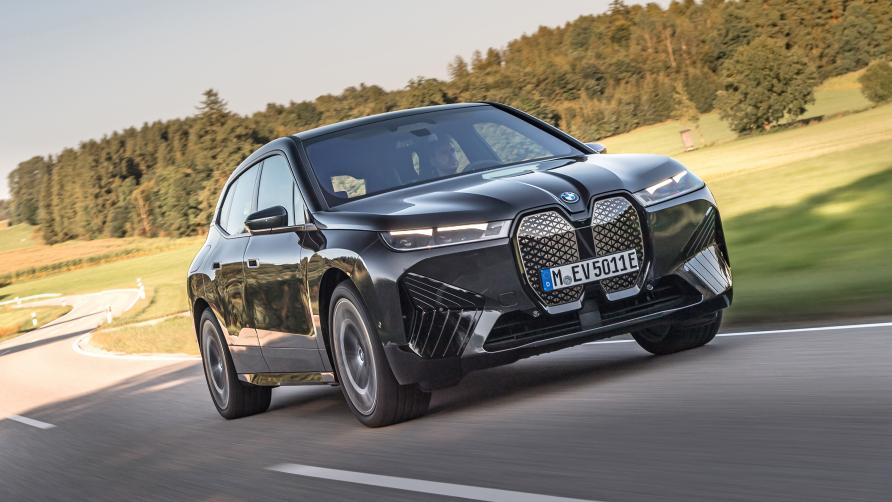
OVERVIEW-WHAT IS IT?
Just when you thought BMW couldn't get any more controversial, here comes a really controversial BMW.
It's hyped as the company's technology flagship. Fair enough. But did it have to be a hulking two-and-a-half tonne SUV? Did it really need a whole new operating system that demands hours of learning? Most of all, did it have to look like… this? It first turned up as the iNEXT concept three years ago. Ever since, the bandwidth of online hate has been fusing entire server farms.
HOW DOES IT LOOK IN REAL LIFE?
Approach the thing in the street and it's actually less offensive than the pictures suggest. Quite interesting perhaps, because it's not pretending to be that impossible thing, a sports-SUV. The ugliest part is doubtless the nose, but an iX specced without the M-Sport package avoids those hideous black trapezoids below the headlamps. They're part of a specious 'aerodynamic pack' that actually doesn't reduce the drag at all.
Meanwhile that huge not-a-grille is covered in plastic that self-heals after scratching. Maybe BMW expected physical attacks. Might we suggest Sinex Nasal Spray?
Inside, almost none of the hardware is recognisable from any other BMW. It's as distinctive as the i3's cabin was (and remains) and aims for the same sort of atmosphere: to invoke a lounge not a car. Unusual materials include matte wood with lit graphics showing through, an optional denim-like recycled fabric, a glass iDrive knob. Straight lines and diagonals dominate. OK, your sitting room might not actually be much much like this. But your sitting room is surely not at all like the cabin of an X5.
The flat floor and long wheelbase and width all boost the space. Which makes it bulky on the outside too. Like the i3 and i8, this is a wholly bespoke structure. The cabin sits in a three-dimensional box-frame of carbonfibre. There's a lot of aluminium too. None of this is shared with the X5. But the motors, battery design, and the high-voltage electronics are modular versions of what's used in the iX3 and i4. Those electric-drive parts are unglamorous, hidden and most of us don't know how they work. But they're critical to how efficiently an EV runs, how smoothly it drives and how fast it recharges.
SO IT'S ELECTRIC. STATS PLEASE.
Initially there are two versions. Both are twin-motor AWD, so get the xDrive prefix in their full names. The xDrive 40 has 71kWh useable capacity, for a range of 414km WLTP. The xDrive 50 has a 105.2kWh, for a range of 612km on the standard 21-inch wheels. Performance? In the iX 40 it's 326bhp and 6.1 seconds to 100kph. We tested the iX 50, which has 523bhp for a 0-100 of 4.6 seconds.
If that's not enough, an M Performance version, the iX 60M, is coming next year, with the same large battery but kicking out well beyond 600bhp. That'll be the first time the three worlds of M, X and i have collided.
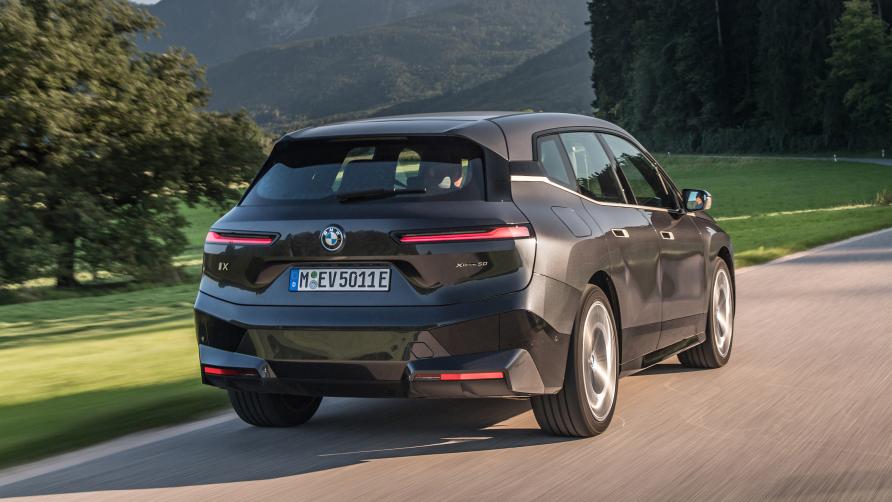
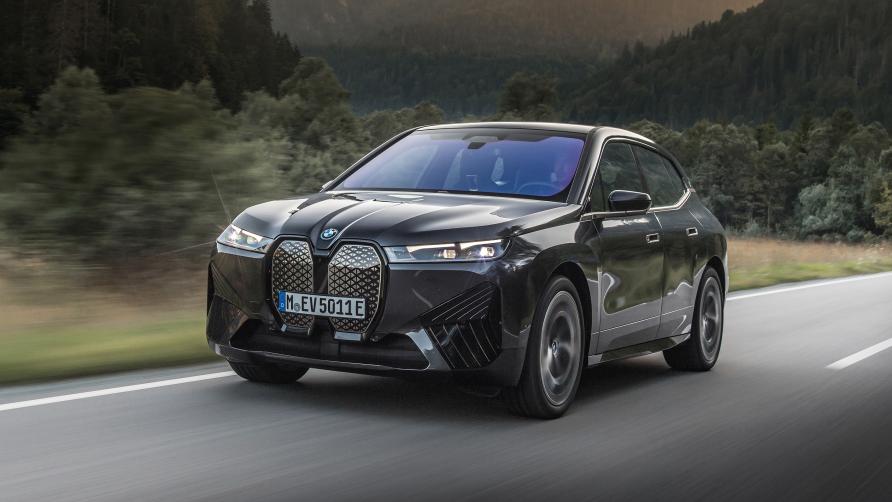
BMWS ARE SUPPOSED TO BE UNCONTROVERSIALLY EXCELLENT TO DRIVE…
It's pretty good. It just doesn't involve you much in the process. But the calibration of all the controls is intuitive, so it's quite satisfying. The steering is accurate, the acceleration smooth and prompt, and it manages its weight neatly enough.
It has a Sport mode but it doesn't make much difference and anyway why would you? This car is about comfort, silence and relaxation, even when covering the ground at surprising speeds.
WHAT'S THE VERDICT?
BMW will do battery versions all its mainstream models – as it already has with the Mini Electric and iX3 – but it also wanted to build this all-in electric car as a showcase for its best work on materials, aerodynamics and driver assist.
BMW isn't selling this as a driver's champion. If you want a traditional BMW sports saloon that happens to be electric, the i4 is your car. The iX is a big comfy home-on-wheels, and a vast amount of technology has been poured into making sure the driver is soothed while the passengers kick back. It's efficient for a full-size e-SUV. The range is impressive, and it can recharge pretty rapidly too.
Choose carefully from among the visual option packs, wheels and paint. Then you might find an iX you can like the look of. There's a lot else to like.
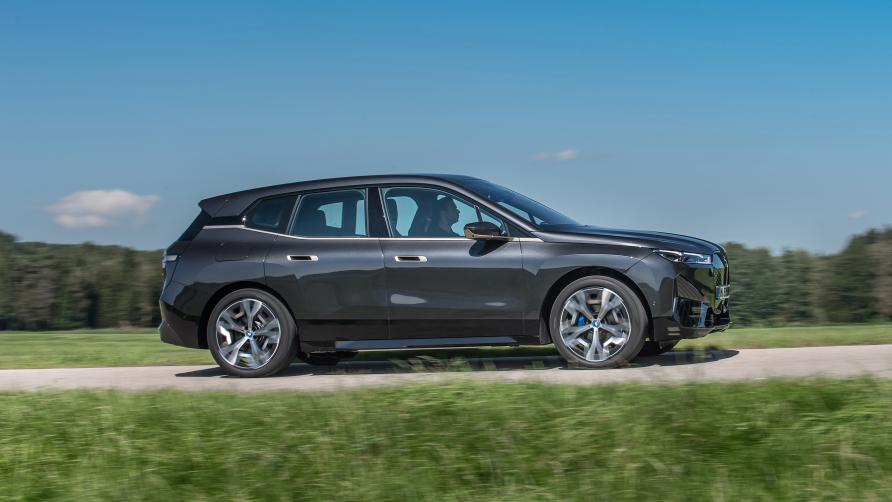
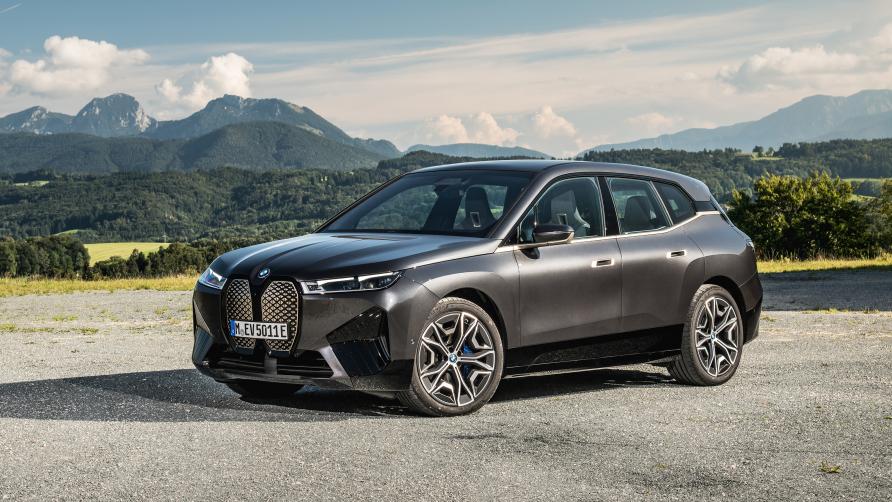
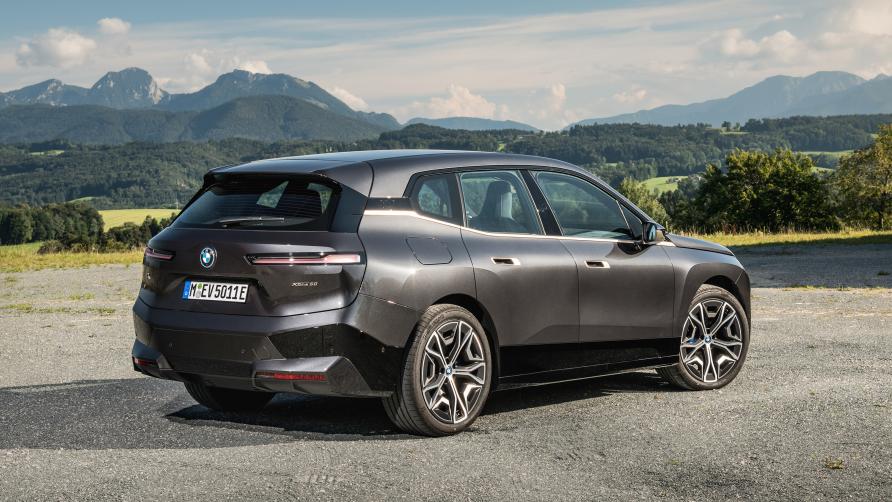
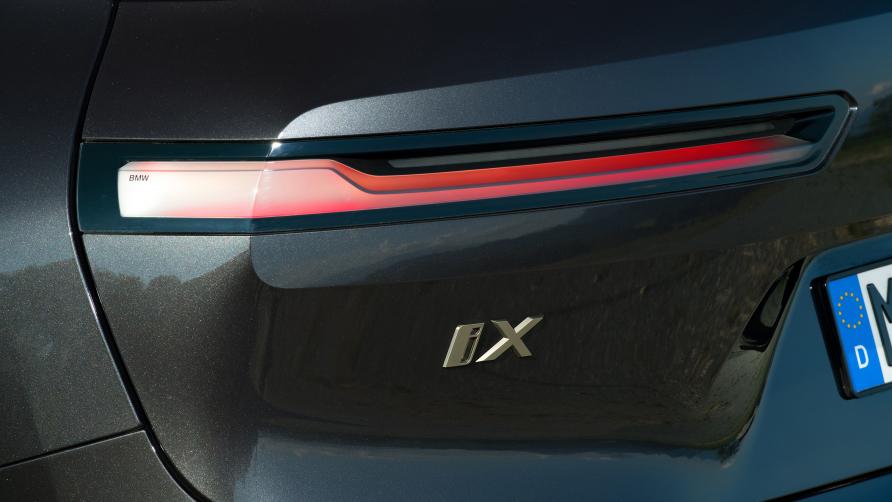
DRIVING-WHAT IS IT LIKE TO DRIVE?
Our first go in a test car is an iX xDrive 50 M Sport. It actually has the same motors and power electronics as the xDrive 40. But the bigger battery can simply kick out more current, so its motors can release the full 523bhp and 765Nm ft. Air suspension and four-wheel-steering are also standard on the 50.
The performance does that typical EV thing – an instant and precise response to the throttle pedal. It's a characteristic we cherish in steering systems, yet we give a free pass to modern petrol powertrains that mostly have to come on boost and shift down and finally surge ahead. EVs just go.
On top of that the iX 50 just goes sodding forcefully. Okay, it's not the near-painful full-bore of a Ludicrous Tesla or Turbo Taycan. But for swift corner exits or snappy overtakes, the combination of power and pedal precision make it quite some tool.
Traction of course is immense, but not so much that it can't be overcome on a tightish corner even in the dry. Whereupon the traction control and front-rear torque vectoring dextrously keep you proceeding in exactly the direction you're steering.
IS IT FUN TO DRIVE?
The steering itself is surprisingly quick, presumably to make this behemoth feel agile. You soon get used to it. Less so the wheel rim, a lumpy-rimmed hexagonal thing, for no discernible reason other than that fact this is an interior design that shuns all curves. Anyway, cornering, like the accelerating and braking, is accurate. But it doesn't have much feedback. It's a car you direct, rather than engage with.
The ride is flat and well-controlled, and reasonably supple with it. All that carbonfibre in the bodyshell gives it a terrific sense of strength and integrity. No shudders here.
It's a bulky thing to thread down B-roads. But in town the 4WD and copious cameras and even automatic manoeuvring systems do their best to avoid parking scrapes.
It's also extremely quiet. You can call up a synthesised sound that varies in pitch, tone and volume according to accelerator position and speed. That cue does help judge your approach to corners actually. But mostly you'll be cruising with it turned off, in eerie silence. Just your choice of music.
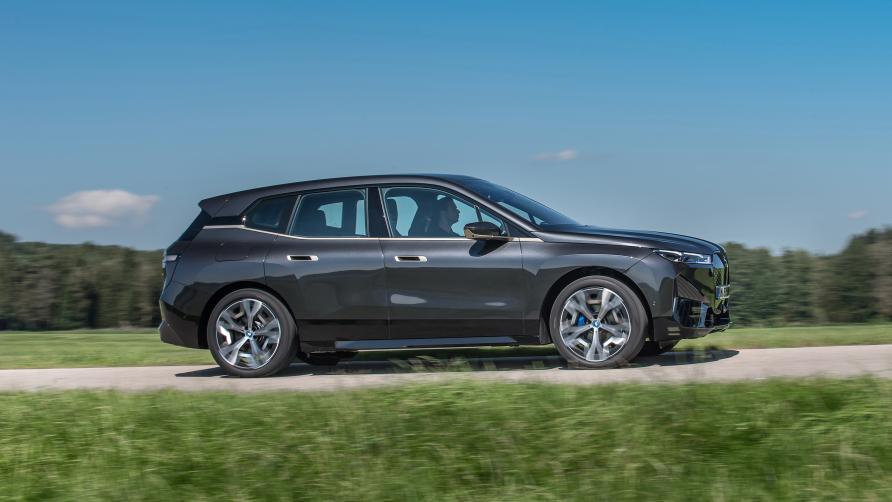
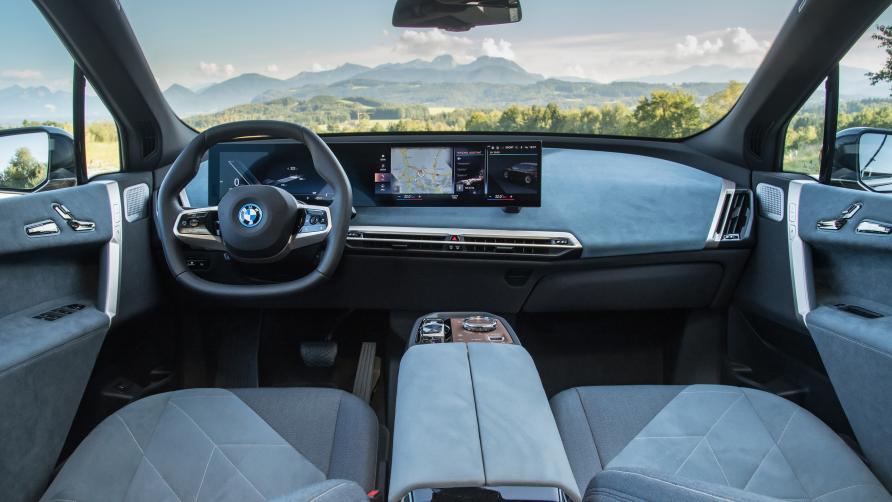
HOW'S THE RANGE AND CHARGING?
Specced like it is in the photos, you have 602km of WLTP range. I got 310, and I was clattering along, and using the air-con.
Range varies impressively little as your steady speeds rise. For instance, rising from 112kph to 128kph cut only about 80km range off. Other EVs lose proportionally more. (Okay, at the limited max of 210kph on the Autobahn it was using nearly 1kWh every mile. Keep that up and the battery's gone in less than an hour, but where can you do 210kph for an hour? Not even Germany.)
Also, range shouldn't collapse with falling temperatures. In those circumstances heat is recovered from the motors and electronics and used to warm the battery and people.
Charging is quick if you are attached to the right gear. For DC rapid stops, the iX 40 will ingest DC at 150kW – or 97km in a 10-minute pitstop. The iX 50 can take nearly 200kW, which is 145km in 10 minutes. It's just over half an hour for both of them from 10 to 80 per cent. If the charger is set as your nav destination, the car gets the battery to its ideal temperature for max charge power just as you arrive there. But on the more common 50kW posts you could be there for two hours in the xDrive50.
All iXs have three-phase 11kW on-board AC chargers, but few of us have three-phase at home so we'd be limited to single-phase 7kW. That means about 14 hours for the big-battery car to get from dead flat to 100 per cent. So you'd probably plug in well before zero.
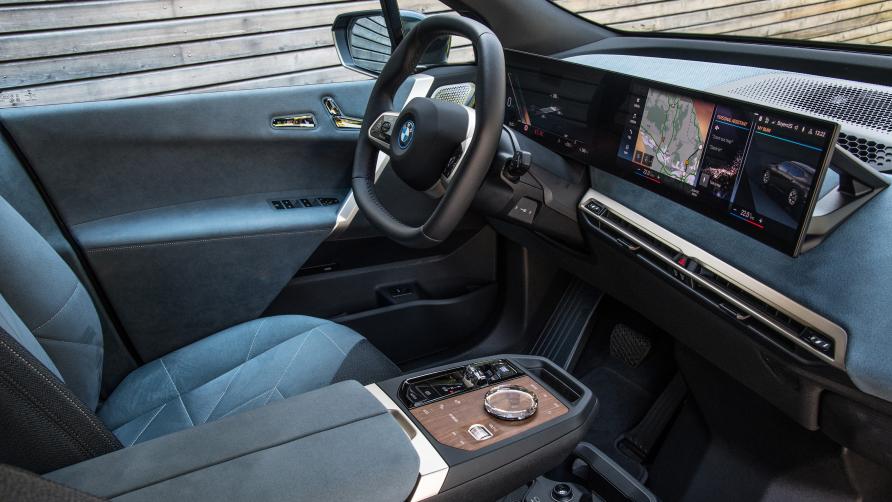
INTERIOR-WHAT IS IT LIKE ON THE INSIDE?
Furnishing takes on a whole new style for BMW. It's open and straight-edged and themed with diagonals. Even, as mentioned, in the steering wheel. Which is no longer a wheel.
Sweeping ahead of you is the huge two-parts-blended display. It stands proud of the dash on elegant metal brackets that should be holding up bookshelves in a modernist house. One part is touchscreen, one part instrument pod.
The touchscreen is big enough that you can reasonably have several windows open to show both entertainment and map, or map and energy use. The instruments are configurable too, although without the option of the most legible design ever invented: circular dials. Still, the huge head-up display also imparts plenty of read-outs, so you'll never feel uninformed.
Since this is a new operating system and this is 2021, there has of course been a bonfire of the switchgear. Much control has been ceded to the screen. Or voice, provided you don't feel silly talking to your car and being misunderstood one time in three.
ARE THERE *ANY* BUTTONS?
Fortunately the iDrive controller remains, and is a great way to do many tasks. It's made of clear glass now, yet it retains a top surface that's sensitive to you writing letters with your finger like an old PDA. An effective form of input, actually.
Cleverly, several of the remaining switches have three horizontal bars in their icon. With these, a long-press will summon a relevant menu on the screen. So press the map light button and it switches on as per. But long-press it and the full screen menu for interior lighting pops up: ambient light, dimmers, etc. Excellently there's also one of those for the driver-assist menu. Otherwise turning off the default-on lane-assist steering interference system (which is too hyperactive for normal single-carriageways) needs multiple jabs at the screen.
Phone connectivity and integration is superb. This is the first car where the phone's maps show up in the driver's screen and the HUD. If the car gets low on charge, it triggers Apple Maps to give you a charging station.
The materials are pretty wild. Some of the buttons are glass. The wood is modern open-pore with backlit switch icons shining through. There's a defiantly hippy-looking faded blue cloth option for the seats. Doubtless it'll be discontinued after a couple of years when everyone has chosen black leather.
It's really roomy, with a flat floor and one of those multi-level central storage consoles common to EVs. In the back three fit abreast easily, and the boot is a cavern. But open the bonnet and you'll find no frunk. Or froot.
The optional 'heat comfort pack' electrically heats the lower dash, door trims and console, gently warming you while using less energy than blown air heating.
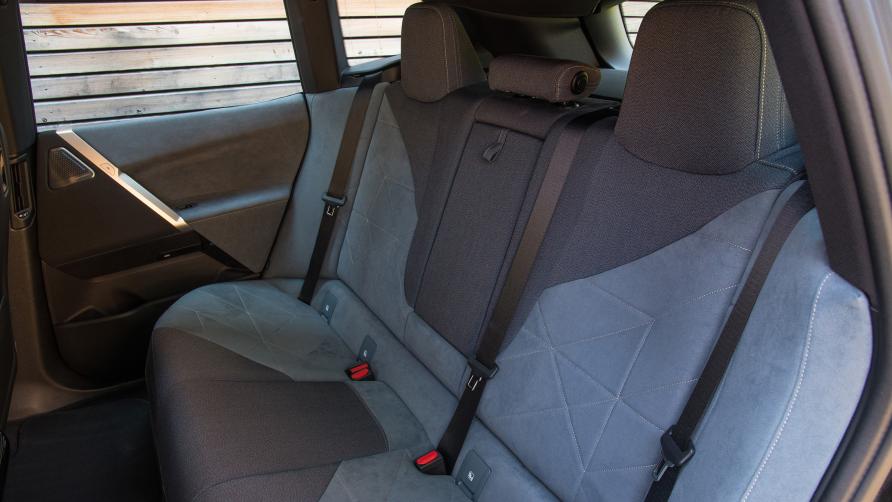
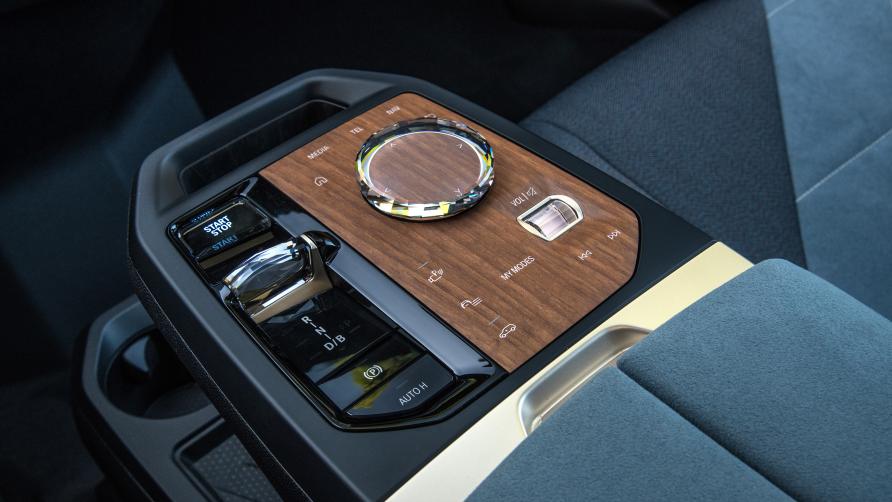
BUYING-WHAT SHOULD I BE PAYING?
List prices begin a squeak under £70k (RM397k) for the xDrive 40 in Sport trim, which bears what Top Gear thinks is the more attractive (or less unattractive) of the two facial expressions.
That's almost exactly £1000 (RM5.6k) a month with a £10k (RM56k) deposit for 1609km per year over three years. Ofcourse you'll be making a lot of fuel savings versus a diesel SUV, especially as BMW bundles-in discount rates on Ionity and BP Pulse rapid-chargers for the first year.
That's for 413km of range. Not a great range-to-price ratio, but the equipment list is well padded. It includes all that screen hectarage and connectivity, 655 watts of Harman Kardon, 21-inch wheels, and advanced driver assist.
The xDrive 50 justifies its step up to £92k (RM521k) with significantly more power, more range at 611km, air springs and 4WS. If you must have the M Sport pack, which is almost entirely cosmetic, it's £3k (RM17k) on both. On any iX, kitchen-appliance white is the only paint that's not a £795 (RM4.5k) option.
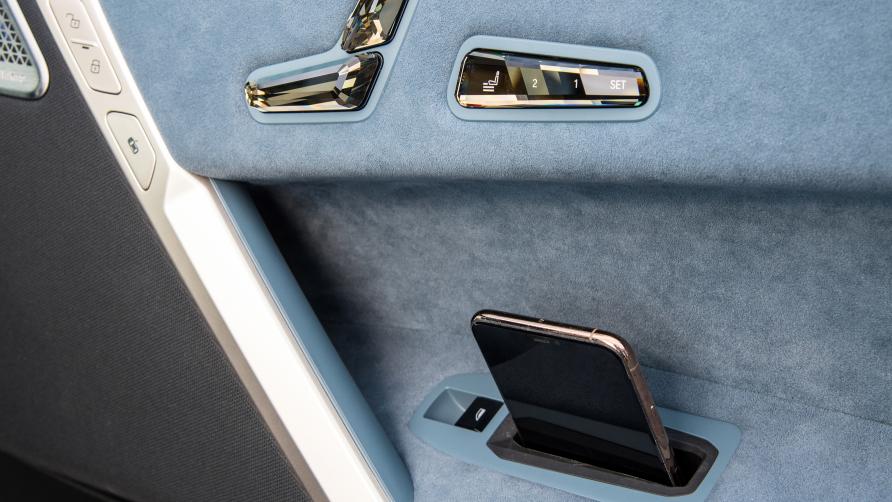
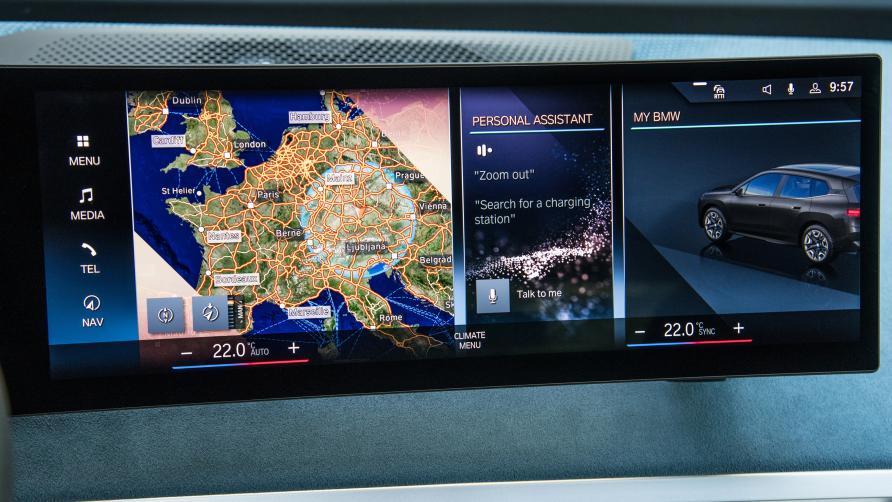
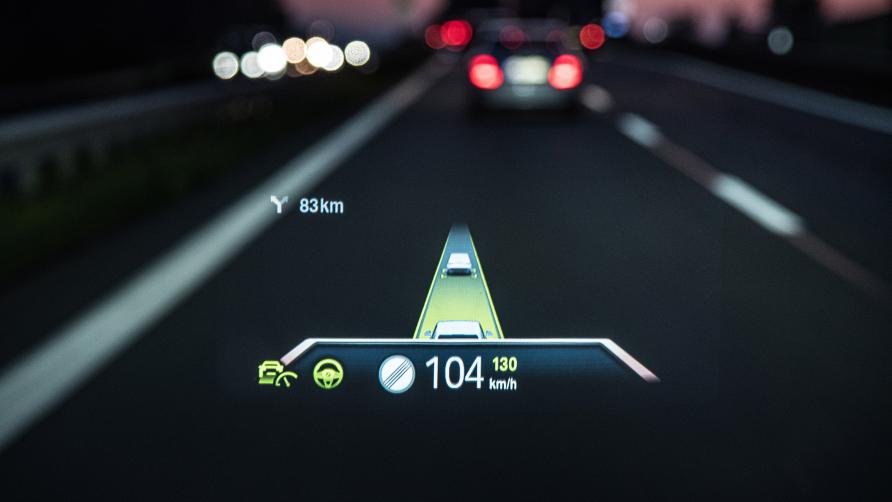
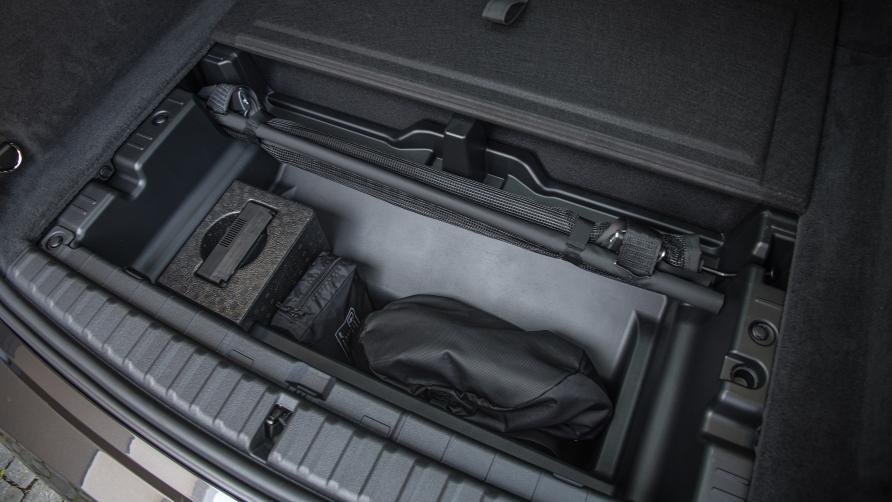
DOES IT COST THE EARTH? WHAT'S THE SUSTAINABILITY STORY?
Well… the motors are the electrically excited synchronous type. (Remember when we used to talk about camshafts and so on?) One of the main advantages is they can keep kicking out big torque all the way to high revs, and they're efficient doing so. Our improvised consumption and acceleration test on the autobahn bore this out.
Because they have no magnets, they don't use rare-earth metals, one of the earth's resources that EVs threaten to put into short supply. BMW is also careful to use little cobalt, and to source it traceably. Renewable energy is used to make the body's substantial carbonfibre frame, and to run the battery cell plants, and the iX assembly plant. There's also a lot of aluminium in the car, half of which is recycled rather than coming from ore.
The leather is sustainably tanned using olive leaves instead of some of the usual noxious chemicals. The carpet is partially recycled ocean plastic. One upholstery option is wool (so, non-vegan then) with recycled polyester.
An independent audit by TUV shows its lifetime carbon footprint is 45 per cent less than an X5's. Hmmm, maybe another enormo-SUV isn't the best point of comparison, guys.

